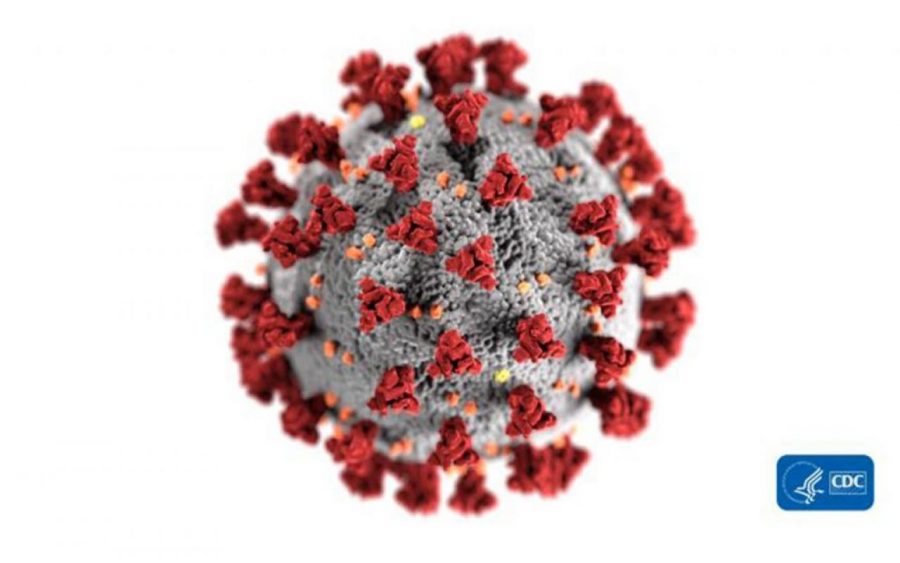New variant of COVID-19 found in Columbus by OSU researchers
Healthcare facilities have begun to administer vaccine doses across the country. Could mutations in the virus affect vaccine effectiveness rates?
Ohio’s capital now has its own unique variant of COVID-19.
February 5, 2021
On Jan. 21, scientists from The Ohio State University discovered two new strains of SARS-CoV-2, the virus that is responsible for COVID-19, in Columbus, Ohio. The mutated strains were found to be similar to ones in the U.K. and South Africa; upon further investigation, however, the researchers claimed that this new “Columbus Strain” had different mutations that have not been seen in the virus to date.
Since the start of the national pandemic in March, Ohio has reported approximately 900,000 COVID-19 cases. Out of these numbers, 11,000 people have died, and thousands more have been left in critical conditions. From the sheer numbers of casualties, the blow to our global economy and the impact of the virus on our daily lives, it’s clear that this virus that rapidly spread around the world in two short months is radically different from any other pathogen previously encountered. How did the virus spread so fast across the globe? And what can we do to prepare for this new mutant strain?
Sarah Bagby, assistant professor of biology at Case Western Reserve University, identifies various ways of how SARS-CoV-2 is unlike other pathogens we’ve seen before. Bagby notes that the intrinsic biology of the virus that is responsible for COVID-19 is radically different from others; unlike other viruses, the SARS-CoV-2 can attack a large range of tissues.
“In severe cases, doctors aren’t just having to manage a respiratory illness, they’re having to treat a respiratory illness and a kidney illness and a cardiac illness and so on, all in the same patient at the same time,” Bagby reported. With COVID-19, the virus initially causes respiratory symptoms, but later on it can cause massive organ failures in many different systems.
Bagby also notes that the virus is much newer than others encountered. The first case of COVID-19 was reported in late 2019. In a little over a year, two million people have died due to complications from the virus. In addition, the pandemic has severely impacted healthcare workers physically and mentally. “In many places at many points over the last year, there simply hasn’t been the space or equipment or drugs or medical staff to apply that hard-won knowledge and help more patients pull through,” Bagby reported.
On Dec. 14, 2019, a year after the first virus was found in Wuhan, China, the first COVID-19 vaccine created by Pfizer was administered. Different versions of the vaccine were soon manufactured by rival pharmaceuticals such as Moderna, Sinovac and Johnson & Johnson. Pfizer and BioNTech have reported that their vaccines are 95% effective, and other vaccines claim similar percentages. It’s important to note that these vaccines have been tested primarily on the original strain of SARS-CoV-2.
Soon after the creation and administration of the vaccine, the Columbus Strain was discovered by researchers at The Ohio State University. Bagby notes that mutation isn’t unusual; rather, mutation is a natural process occurring in all biological organisms when DNA is improperly replicated. DNA strands are replicated by enzymes and pass down genetic information to newer cells.
“You can think of errors by these enzymes basically as typos, and they’re one big source of mutations. Some viruses devote resources to proofreading their work and fixing mistakes; others don’t, and they acquire mutations faster,” she reported.
It’s unsurprising that the virus has mutated. SARS-CoV-2 viruses have infected hundreds of thousands of people worldwide, after all.
It is uncertain whether the vaccines produced by leading pharmaceutical companies can combat the new Columbus Strain to the same efficiency. “To the best of my knowledge, we don’t yet have data on any changes in mortality rates accompanying these mutations,” Bagby reported.
Scientists from The Ohio State University are running more tests on the new virus to examine the transmission and symptoms of these variants. Other experts predict that, from the strains found in South Africa, the U.K. and Columbus, one of these strains will be more infectious. However, these variants do not necessarily have the same effects as the original strain, and could in fact be less deadly. More data is needed to properly characterize all the new variants.
The university recommends that students continue to follow preexisting measures to keep COVID-19 positivity rates low. To date, CWRU has enacted several measures to keep rates of transmission to a minimum. The switch to saliva-based testing in October has allowed significant increases in the number of people who could be tested weekly. A month later, when rates skyrocketed across campuses, CWRU enacted shelter-in-place protocols. Finally, in the spring semester, CWRU has worked with governmental officials to secure vaccine doses for first responders and those involved in clinical care. These measures have kept COVID-19 rates low.
“Despite spikes in Cuyahoga County’s weekly positivity rates as high as 25 percent in November and December, Case Western Reserve’s highest rate during the semester is 2.28 percent,” the university reported.
Although rates were low in the fall semester, the university notes that, as the weather turns colder, individuals may spend more time indoors, where the transmission risk is higher. The university is reimplementing measures to protect the health and safety of CWRU students and predicts that these measures should help protect against the new strain as well.
When asked on what precautions individuals should take against COVID-19, Bagby said, “There are not really any mysteries here. Wash your hands. Wear your mask. Get vaccinated as soon as you’re eligible. In the meantime, avoid prolonged indoor contact with other people, especially unmasked.” She concluded with a message to students: “If, like me, you very much want the pandemic to be over, the best thing you can do is remember that it still isn’t, and act accordingly.”


